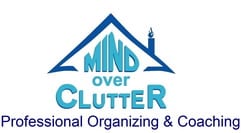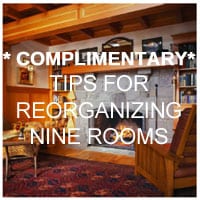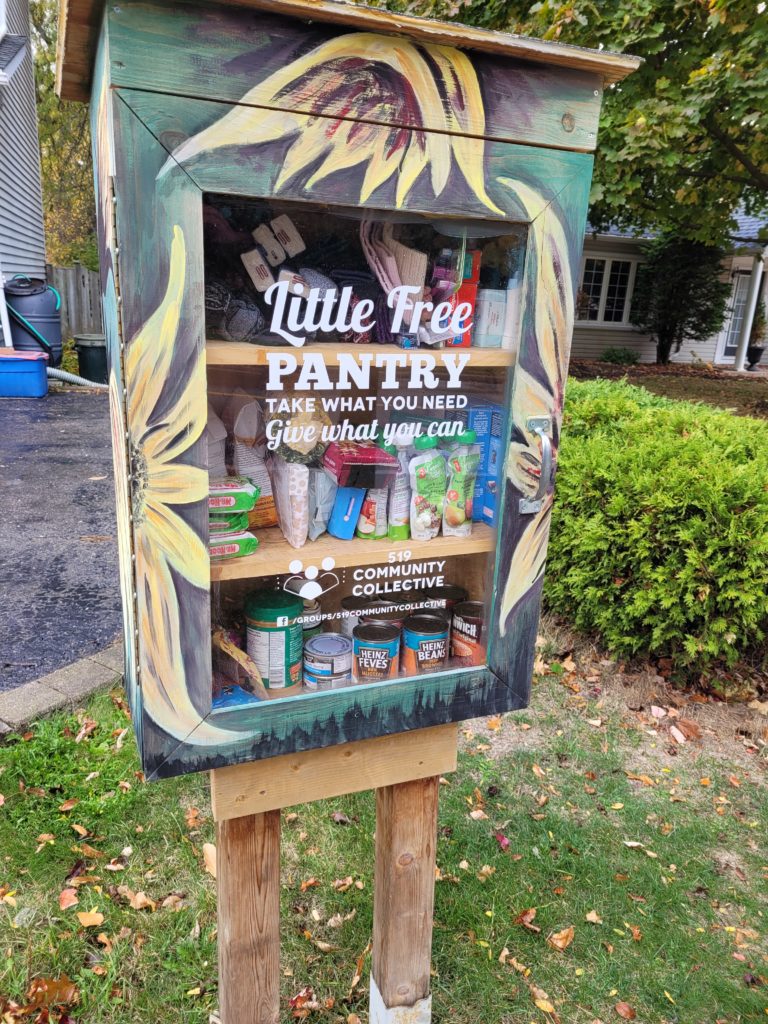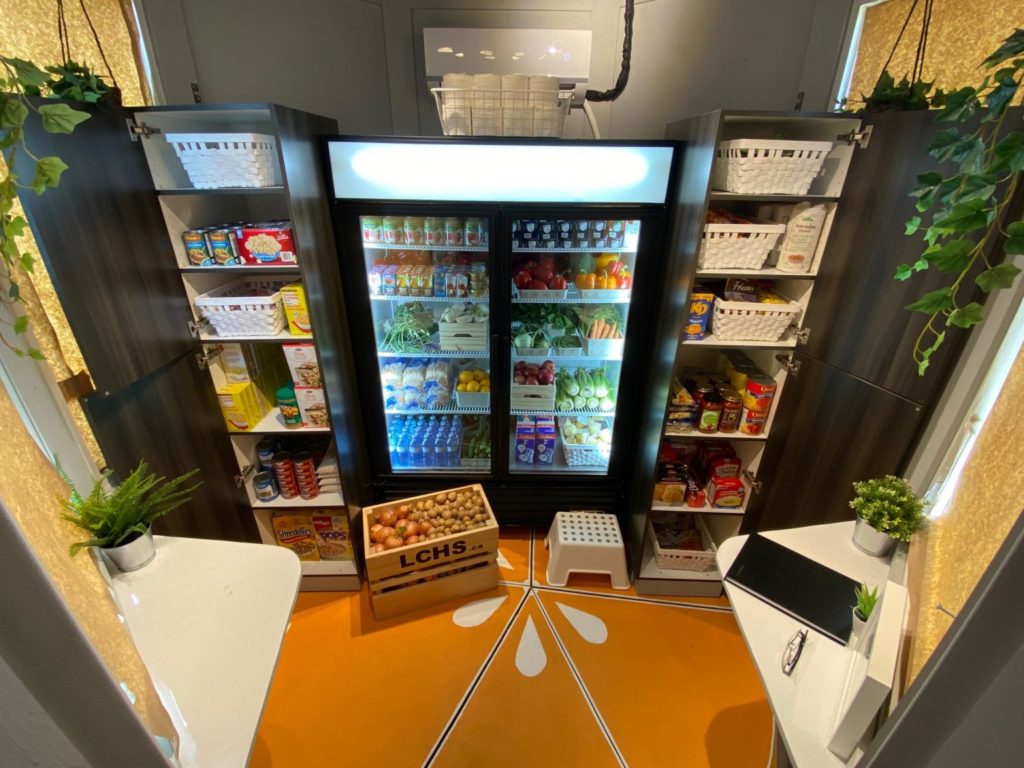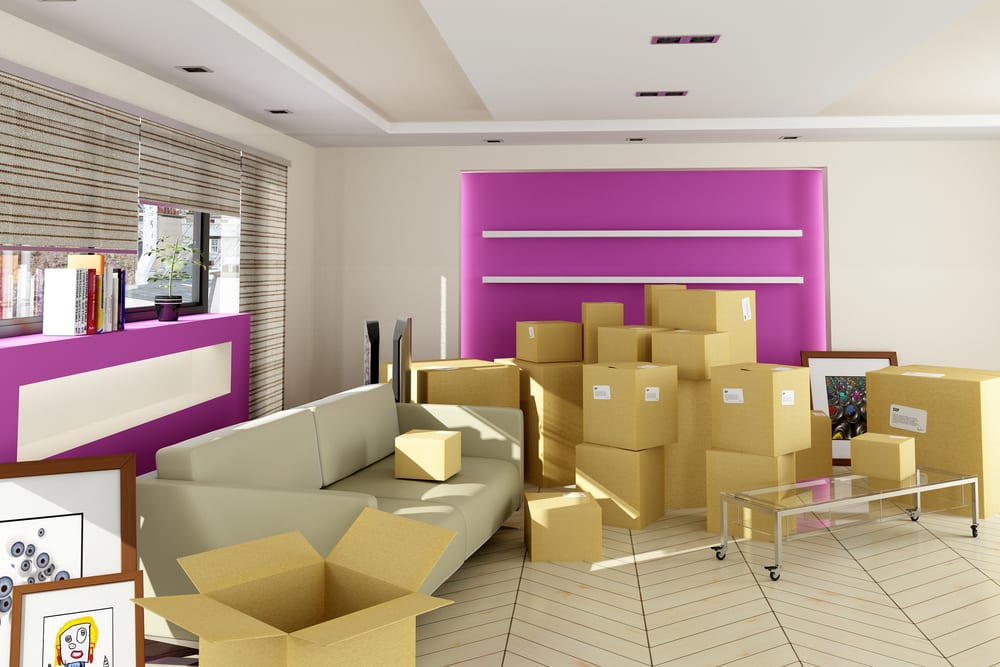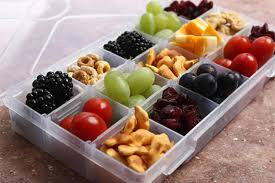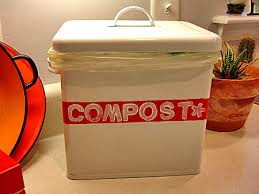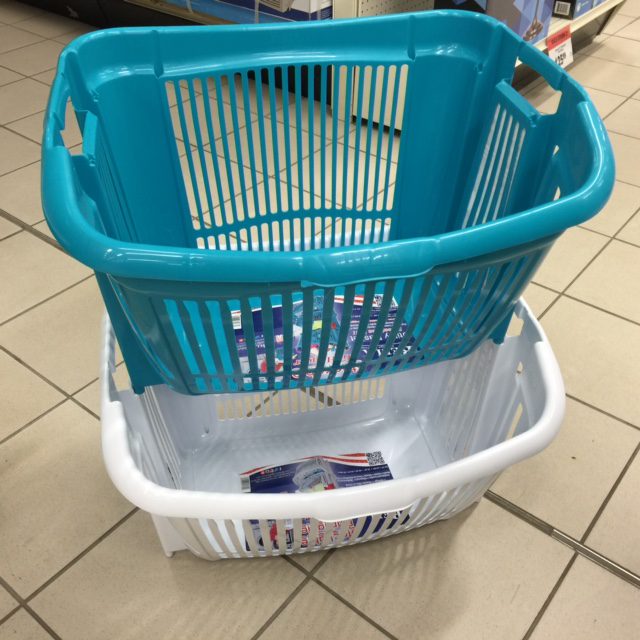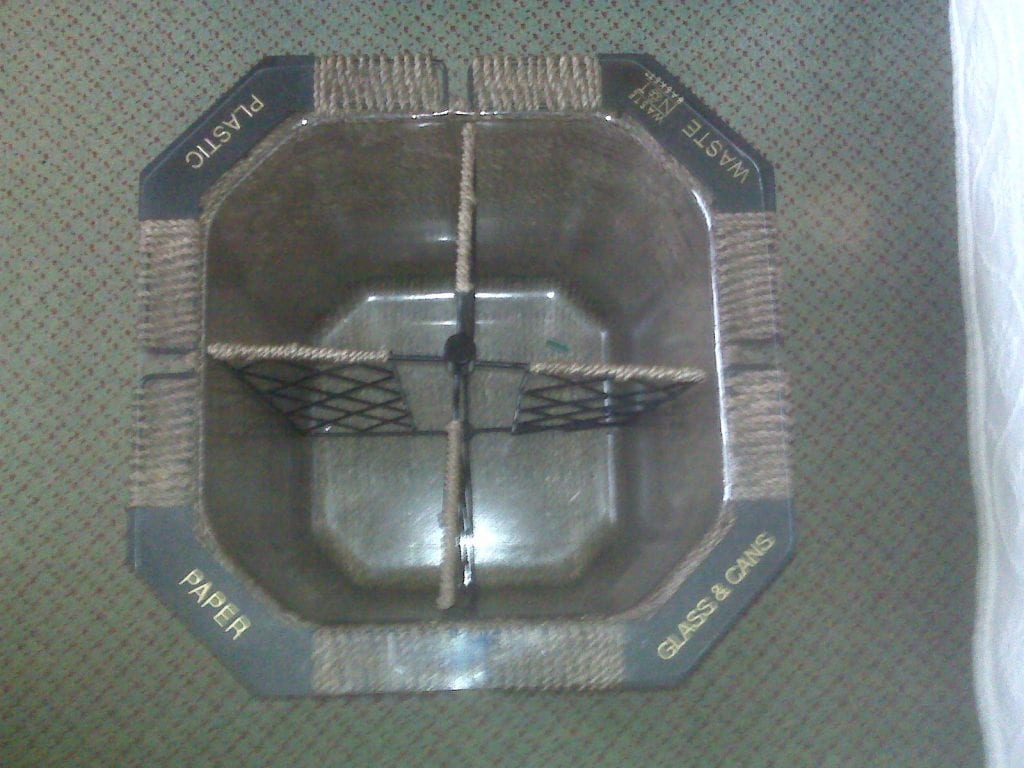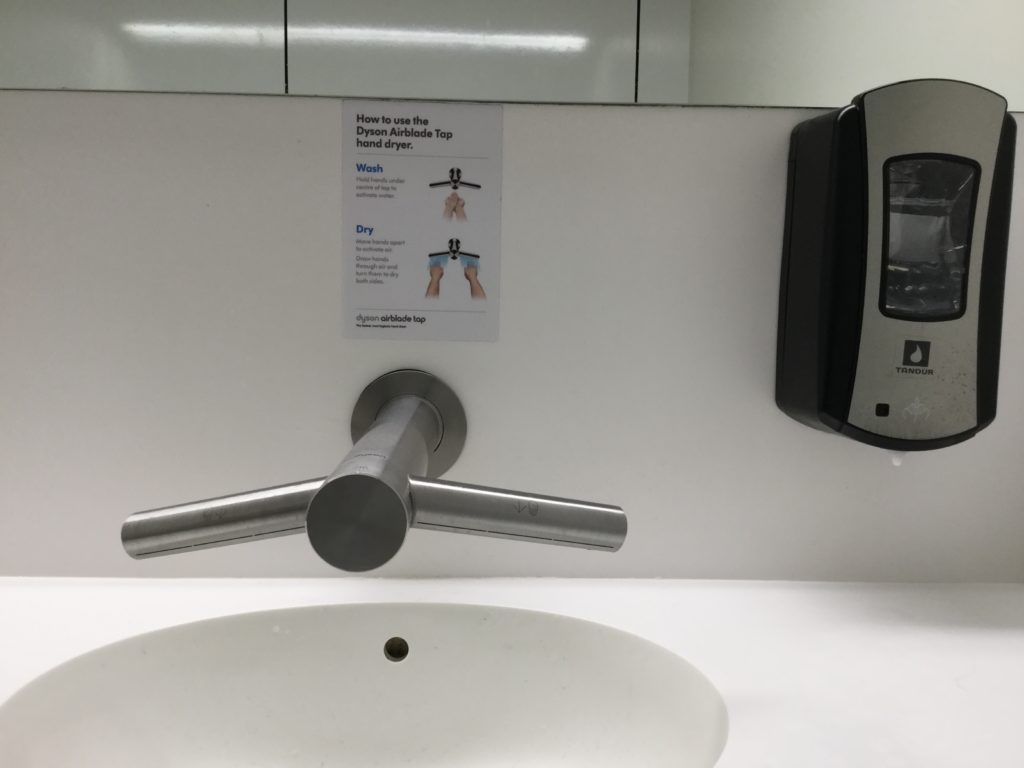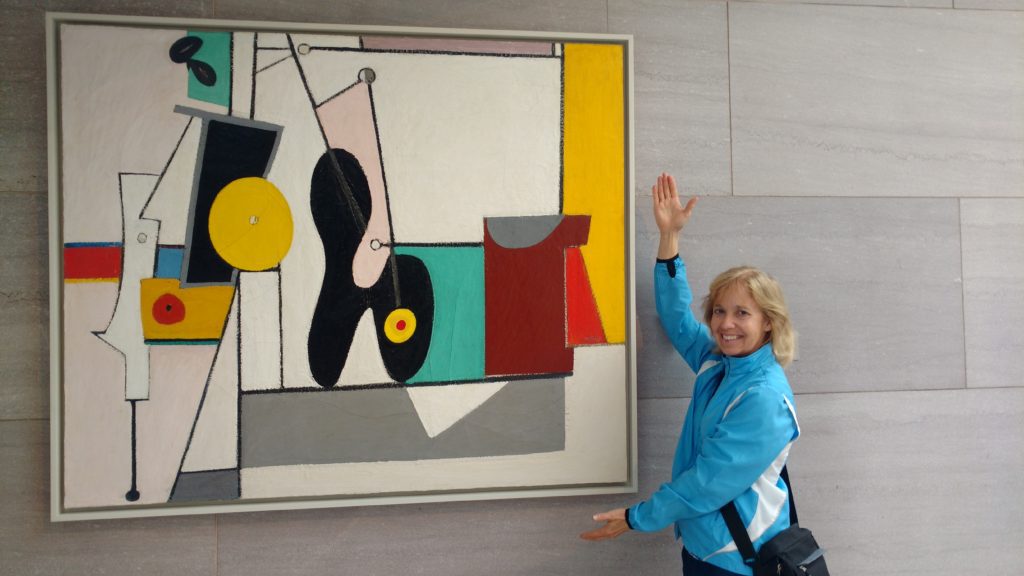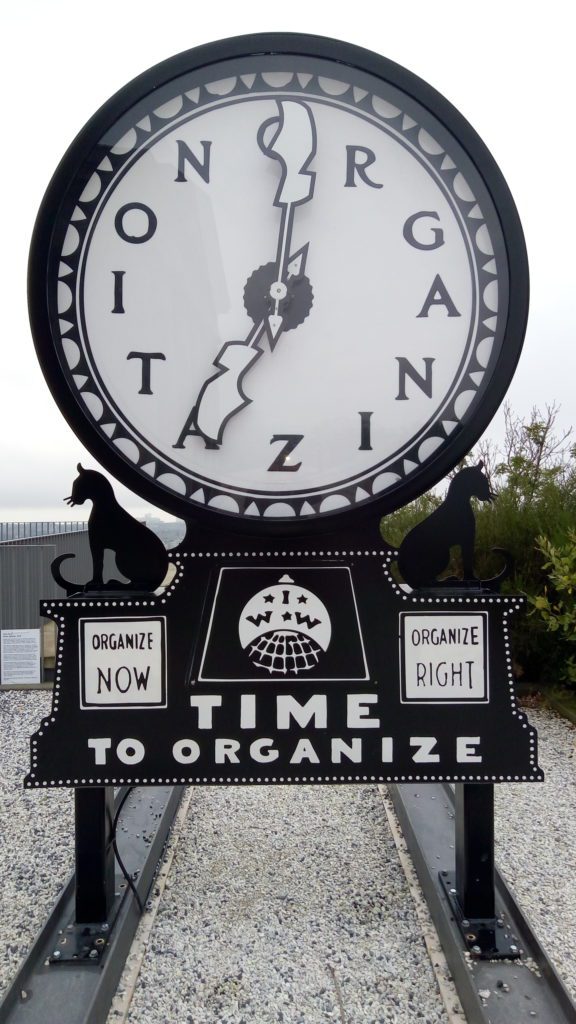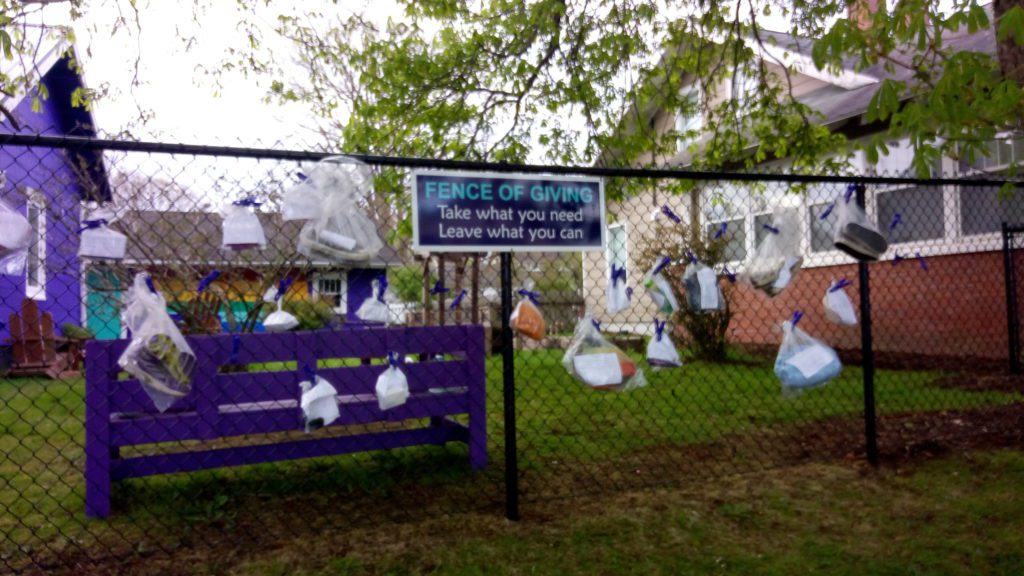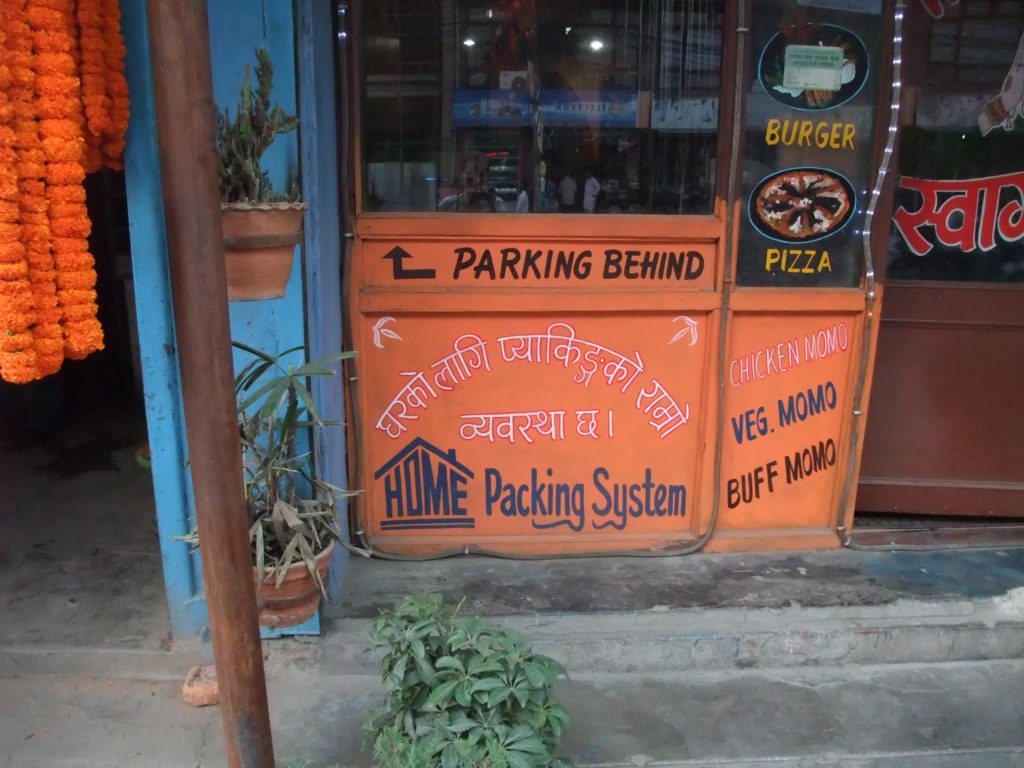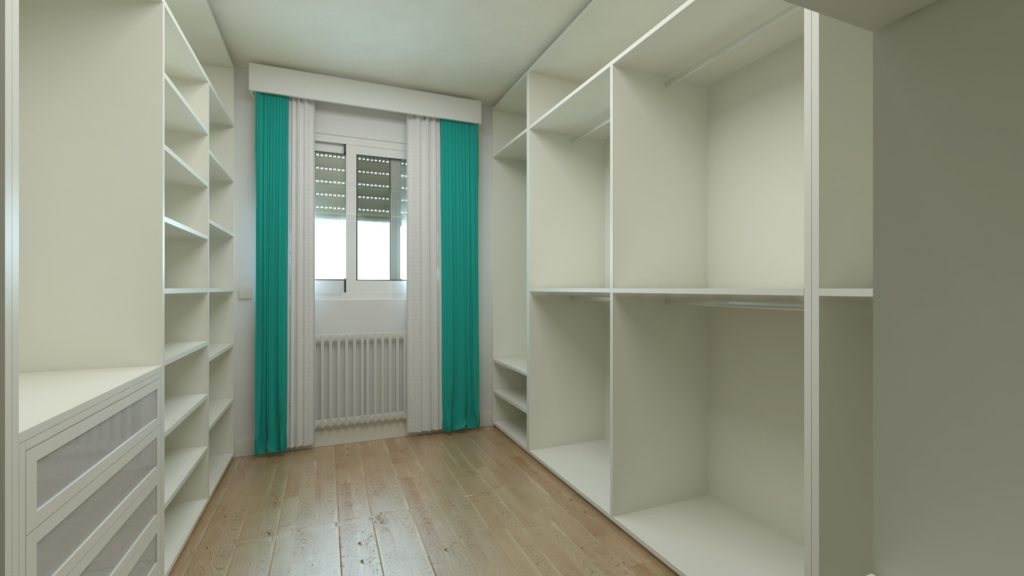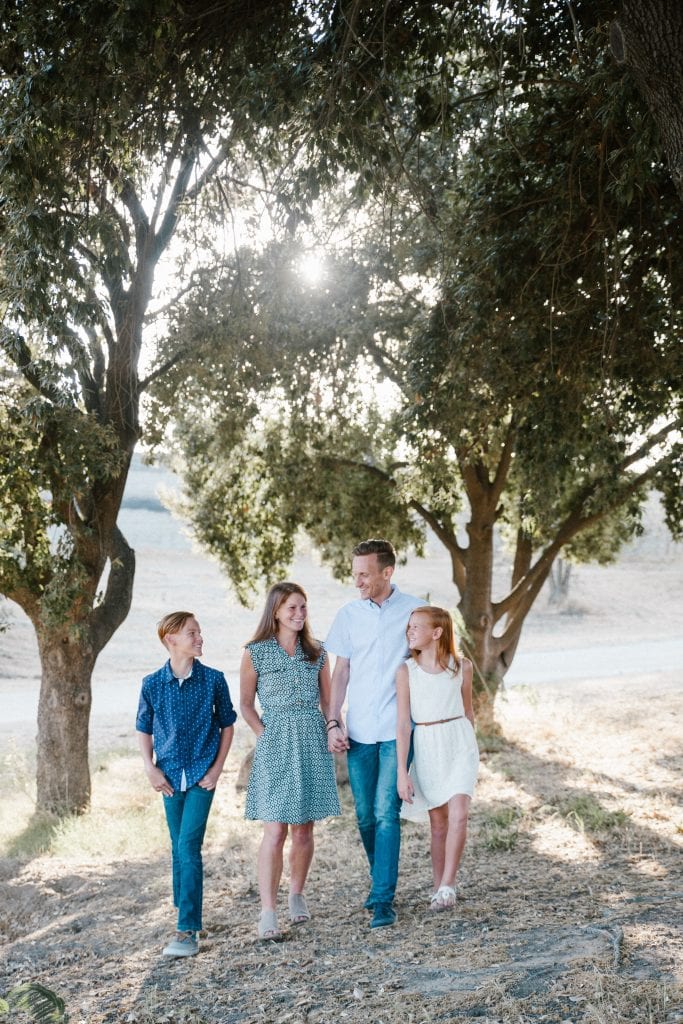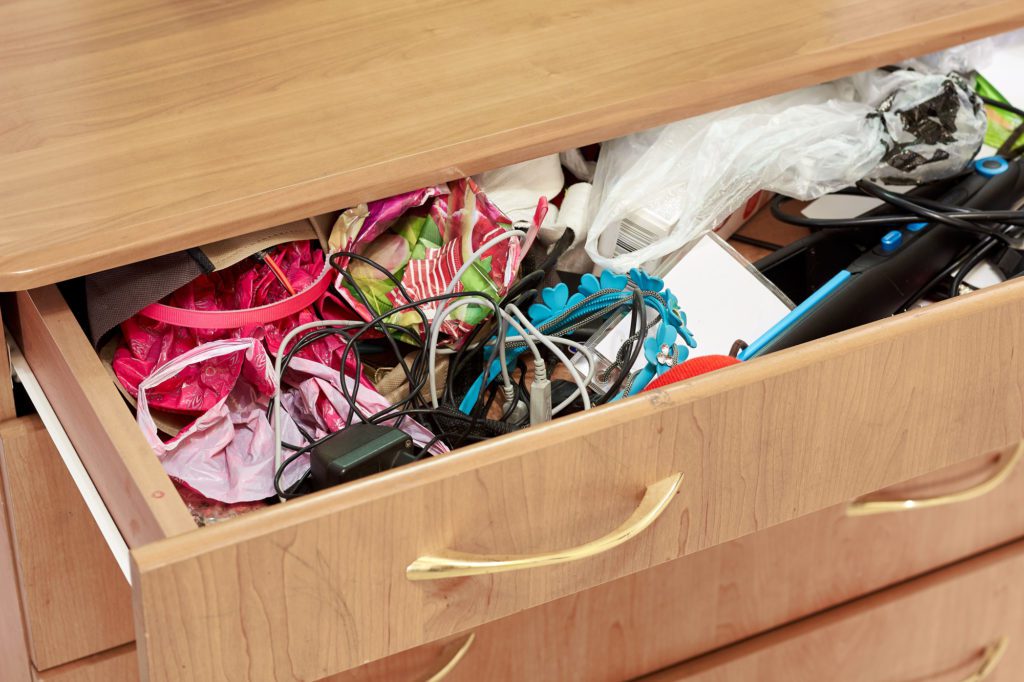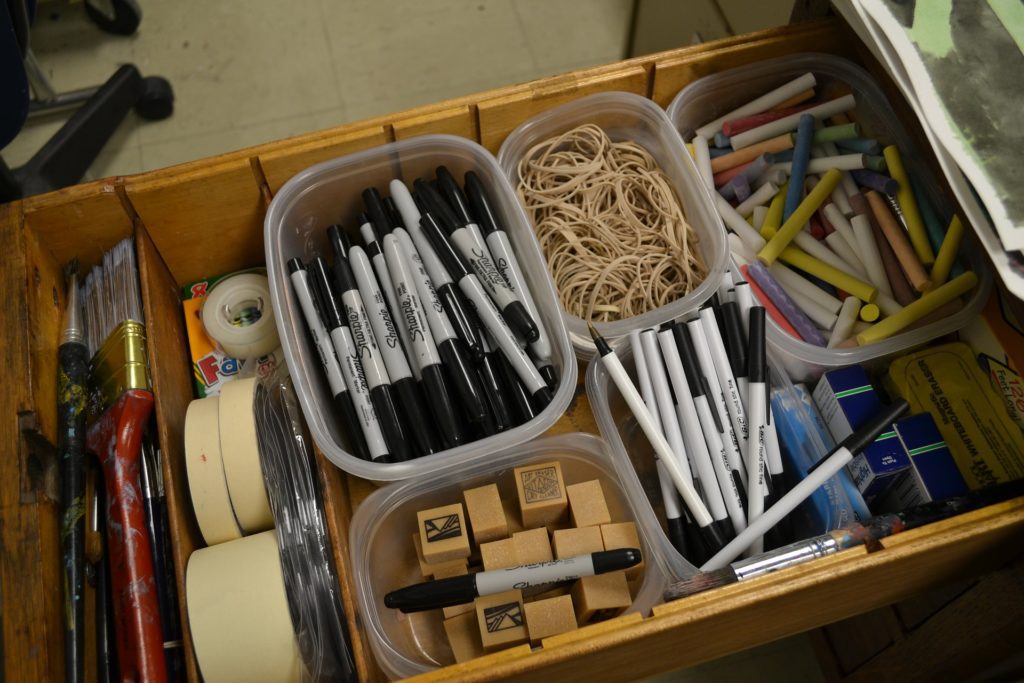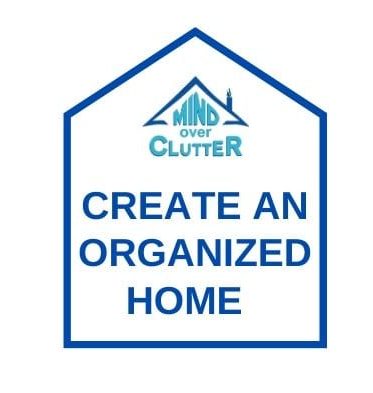Latest Blog Posts
You may have heard of little free libraries. They are cupboards mounted around neighbourhoods where you can donate a book and take a book, for free. This Thanksgiving my niece introduced me to the Little Free Pantry in her neighbourhood.
Community Fridges have been around for several years, beginning in Germany and Sweden in 2012 and now several exist in many countries and across Canada including one in Hamilton and eight in Toronto.
Giving opportunity
My niece asked everyone in the family to bring canned or boxed goods or baby food and diapers to our Thanksgiving meal. She collected them and is putting them in The Little Free Pantry as items are taken to help restock the cupboard. I was honoured to be asked to contribute to this project. The pantry is there for anyone to take some food or donate food to help everyone have better food security. “Take what you need, leave what you can”, is their tagline. Why are they doing this, to “build a better community by fighting hunger today.”
519 community collective
This project sprung up out of Covid. The founder is Julie Sawatzky.
They are one of many groups working together to fill gaps for seniors, single parents and families who are living in shelters or transitional living by providing emergency aid and essentials to create a better and more stable tomorrow.
The 519 Community Collective has 12 programs including a community fridge nourish kitchen, 2 urban gardens, 23 little free food pantries installed across the region, an assortment of emergency food programs, and more.
Lincoln County Community Fridge
Down the road from where I live is another food pantry project. On July 5, 2021, the Lincoln County Humane Society launched the Lincoln County Community Fridge at its animal shelter in St. Catharines, Ontario.
What is a Community Fridge?
This is how they describe their program. “Our fridge, like others, is a place where anyone who needs food can come to our Community Fridge and take what they need. We have a large, double glass doored fridge in a new room we built, out of a former cat gazebo. The insulated room is also equipped with 2 pantries to hold dry goods and some limited amounts of toiletries and hygiene products.
As I walk around my community I love seeing the many ways people are sharing to make their community better for everyone.
Tell me about sharing projects in your community.
 Julie Stobbe is a Trained Professional Organizer and Lifestyle Organizing Coach who brings happiness to homes and organization to offices, in person and virtually. She has been working with clients since 2006 to provide customized organizing solutions to suit their individual needs and situation. She uses her love of physical activity to reduce clutter, in your home and office. She guides and supports you to manage your time. If you’re in a difficult transition Julie can coach you to break-free of emotional clutter constraining you from living life on your terms. Online courses are available to help instruct, coach and support your organizing projects. Get started by downloading Tips for Reorganizing 9 Rooms.
Julie Stobbe is a Trained Professional Organizer and Lifestyle Organizing Coach who brings happiness to homes and organization to offices, in person and virtually. She has been working with clients since 2006 to provide customized organizing solutions to suit their individual needs and situation. She uses her love of physical activity to reduce clutter, in your home and office. She guides and supports you to manage your time. If you’re in a difficult transition Julie can coach you to break-free of emotional clutter constraining you from living life on your terms. Online courses are available to help instruct, coach and support your organizing projects. Get started by downloading Tips for Reorganizing 9 Rooms.
Contact her at julie@mindoverclutter.ca
Click here to learn more about her online course Create an Organized Home.
Twitter – Facebook – Facebook group Organizing Mind and Space
Reading Time – 2 minutes
There are so many books and articles about organizing a room. It can become very confusing. How to start, what to do first. All those words on the page. Here is an infographic to visually show you the sequence of tasks you need to do to reach your organizing goals.
Let me answer your questions. Book a complimentary 30-minute chat online.
 Julie Stobbe is a Trained Professional Organizer and Lifestyle Organizing Coach who brings happiness to homes and organization to offices, in person and virtually. She has been working with clients since 2006 to provide customized organizing solutions to suit their individual needs and situation. She uses her love of physical activity to reduce clutter, in your home and office. She guides and supports you to manage your time. If you’re in a difficult transition Julie can coach you to break-free of emotional clutter constraining you from living life on your terms. Online courses are available to help instruct, coach and support your organizing projects. Get started by downloading Tips for Reorganizing 9 Rooms.
Julie Stobbe is a Trained Professional Organizer and Lifestyle Organizing Coach who brings happiness to homes and organization to offices, in person and virtually. She has been working with clients since 2006 to provide customized organizing solutions to suit their individual needs and situation. She uses her love of physical activity to reduce clutter, in your home and office. She guides and supports you to manage your time. If you’re in a difficult transition Julie can coach you to break-free of emotional clutter constraining you from living life on your terms. Online courses are available to help instruct, coach and support your organizing projects. Get started by downloading Tips for Reorganizing 9 Rooms.
Contact her at julie@mindoverclutter.ca
Click here to learn more about her online course Create an Organized Home.
Twitter – Facebook – Facebook group Organizing Mind and Space
Reading time – 3 minutes
Where are those 2 special boxes?Planning a move takes time. Moving is stressful. The packing of all the boxes, the day of moving and then the unpacking. It is easy to misplace something you need on moving day or soon after you arrive. Consider having those important things with you in your vehicle.
What are the 2 most important boxes?
When you are moving pack 2 boxes that have everything you need for moving day and the first night. Keep these 2 boxes with you and not in the moving truck. These boxes should include:
- Glasses – plastic or glass for drinks or water.
- A roll of paper towels
- A roll of toilet paper for each bathroom
- A bar of soap or container of liquid soap for the bathroom
- A hand towel in the bathroom
- Dishcloth, dish soap and tea towel for cleaning dishes that may be dusty from moving
- Sheets for the bed and pillows so you can go to sleep at the end of a long day moving in
- Towels for a shower and basic cosmetics to clean up after the move
- A change of clothes as well as medications
- Chargers for your phone, tablet and computer
What supplies are important?
It is handy to pack a pail of basic cleaning supplies so you can do a quick clean before things are unpacked. Bring:
- Cloths
- All-purpose cleaning supplies
- Broom and dustpan
- Mop
- Pack it all in a pail
Pack a toolbox with basic tools. You may have to reassemble beds, bookcases or electronics. Have:
- a screwdriver with multiple heads
- hammer
- plyers
- adjustable wrench
- tape
Where is that paperwork?
Lastly, have a bag with vital papers. You will need your purchase/rental documents for your new home. Carry memory sticks, backup drives, passports etc that you don’t want to be misplaced or stolen If there is work, assignments or agendas you will need the next day add them to the bag.
With these things easily accessible you can clean up and get a good night’s rest before you continue to unpack and make your new place a home.
Share your moving hacks in the comments.
If you need help with an 8-week packing/moving plan contact me julie@mindoverclutter.ca
 Julie Stobbe is a Trained Professional Organizer and Lifestyle Organizing Coach who brings happiness to homes and organization to offices, in person and virtually. She has been working with clients since 2006 to provide customized organizing solutions to suit their individual needs and situation. She uses her love of physical activity to reduce clutter, in your home and office. She guides and supports you to manage your time. If you’re in a difficult transition Julie can coach you to break-free of emotional clutter constraining you from living life on your terms. Online courses are available to help instruct, coach and support your organizing projects. Get started by downloading Tips for Reorganizing 9 Rooms.
Julie Stobbe is a Trained Professional Organizer and Lifestyle Organizing Coach who brings happiness to homes and organization to offices, in person and virtually. She has been working with clients since 2006 to provide customized organizing solutions to suit their individual needs and situation. She uses her love of physical activity to reduce clutter, in your home and office. She guides and supports you to manage your time. If you’re in a difficult transition Julie can coach you to break-free of emotional clutter constraining you from living life on your terms. Online courses are available to help instruct, coach and support your organizing projects. Get started by downloading Tips for Reorganizing 9 Rooms.
Contact her at julie@mindoverclutter.ca
Click here to learn more about her online course Create an Organized Home.
Twitter – Facebook – Facebook group Organizing Mind and Space
Reading time- 3 minutes
It is time for packing lunches for school. Are you dreading it? Children learn better when they are not hungry so the task is to pack food they will eat and not throw out, hide or trade.
1. You know what your child likes and doesn’t like.
Children will food jag, eat the same thing over and over and never get tired of it. If there is a lunch they like, give it to them, a fruit, a vegetable, a protein and a carbohydrate. When I went to school I would eat a cold chicken sandwich, bread butter and chicken, an apple, a cookie and drink usually milk every day for months. My mom couldn’t understand why I didn’t get bored but I just loved it. Life was easy she made it for me and I enjoyed it.
2. I hate sandwiches.
Some children don’t like sandwiches so give them leftovers. Heat up the leftovers and put them in a Thermos. I had a child who hated sandwiches, I would heat up taco meat and send the shell and toppings cold, a baked potato with butter or cheese, soup, stew, homemade macaroni and cheese. Pack warm chilli with taco chips, cheese and salsa. When you are cooking make extra and freeze it in individual meals and then you have a supply of lunches in your freezer.
3. Get lunches packed after supper when the food is out.
As part of our evening routine, each child would pack the food for their lunch that didn’t need to be refrigerated. They packed veggies, pickles, crackers, and cookies. In the morning I would add a sandwich or hot food to the lunch bag. If you have more than one child this really makes life easy because you don’t need to remember which child likes what.
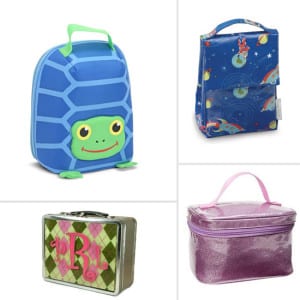

Pick a size and shape of lunch bag that makes it easy to pack and send the correct amount of food to school, not too much, not too little
4. Finger foods are great but you might want to send a fork
Some schools have schedules where children eat smaller meals a couple of times a day. Pack things that your child can eat a few items at a time. Cut up cheese, meat, and bread into cubes. Send nuts, hard-boiled eggs, veggies or cut-up fruit. If you have a container with lots of sections they can open one box and see all their choices. It makes it easier to pack and the child doesn’t have to struggle with lots of containers. There is less to wash at the end of the day. Children are not good at washing their hands before every meal so encourage them to use a fork, send a plastic one in their favourite colour.
5. Leftover lunches – plan differently
When your child brings their lunch home remember it has been unrefrigerated all day, 8 hours, and dirty hands have been in the container touching all the food. Compost the leftovers. Re-evaluate what you are sending and how much food you are putting in their lunch.
Don’t use school lunches as a time to introduce new foods or worry about variety in their diet. Use supper time or weekend meals to introduce them to new foods. You want them to eat a healthy lunch every day. Since you are not there to supervise them when they are eating, make a plan with your child so you can all be happy.
I think I have covered the basics. Share your tips about school lunches in the comments.
If you need help with menu planning book a complimentary appointment with me.






Contact her at julie@mindoverclutter.ca
Click here to learn more about her online course Create an Organized Home.
Twitter – Facebook – Facebook group Organizing Mind and Space
Reading time – 3 minutes
Moving is stressful. The packing of all the boxes, the day of moving and then the unpacking. It is easy to misplace something you need on moving day or soon after you arrive. Consider having those important things with you in your vehicle.
What are the 2 most important boxes?
When you are moving pack 2 boxes that have everything you need for moving day and the first night. Keep these 2 boxes with you and not in the moving truck. These boxes should include:
- Glasses – plastic or glass for drinks or water.
- A roll of paper towels
- A roll of toilet paper for each bathroom
- A bar of soap or container of liquid soap for the bathroom
- A hand towel in the bathroom
- Dishcloth, dish soap and tea towel for cleaning dishes that may be dusty from moving
- Sheets for the bed and pillows so you can go to sleep at the end of a long day moving in
- Towels for a shower and basic cosmetics to clean up after the move
- A change of clothes as well as medications
- Chargers for your phone, tablet and computer
What supplies are important?
It is handy to pack a pail of basic cleaning supplies so you can do a quick clean before things are unpacked. Bring:
- Cloths
- All-purpose cleaning supplies
- Broom and dustpan
- Mop
- Pack it all in a pail
Pack a toolbox with basic tools. You may have to reassemble beds, bookcases or electronics. Have:
- a screwdriver with multiple heads
- hammer
- plyers
- adjustable wrench
- tape
Where is that paperwork?
Lastly, have a bag with vital papers. You will need your purchase/rental documents for your new home. Carry memory sticks, backup drives, passports etc that you don’t want to be misplaced or stolen If there is work, assignments or agendas you will need the next day add them to the bag.
With these things easily accessible you can clean up and get a good night’s rest before you continue to unpack and make your new place a home.
Share your moving hacks in the comments.
If you need help with an 8-week packing/moving plan contact me julie@mindoverclutter.ca






Contact her at julie@mindoverclutter.ca
Click here to learn more about her online course Create an Organized Home.
Twitter – Facebook – Facebook group Organizing Mind and Space
Reading time – 5 minutes
I love to travel. I enjoy exploring Canada, North America, South America, Europe, The United Kingdom, Asia and Australia. I will go almost anywhere. Whether you travel in-person or virtually it is a joy to see new places, people, cultures and ideas. One of the fun things I like doing on my travels is finding things relating to organization. Sometimes the items are good product solutions, show a novel way to use a product, encourage recycling, a fun invention or a thought provoking work of art.
A Good Product
I found these stacking laundry baskets in a store. I like them because they stack in a way that you can place items in either basket without unstacking them.
Novel Solutions
Once again I was shopping and noticed this shoe organizer that was being used in a novel way. It was holding maps that were for sale. It was easy to see the titles on the maps and quickly purchase the one you needed.
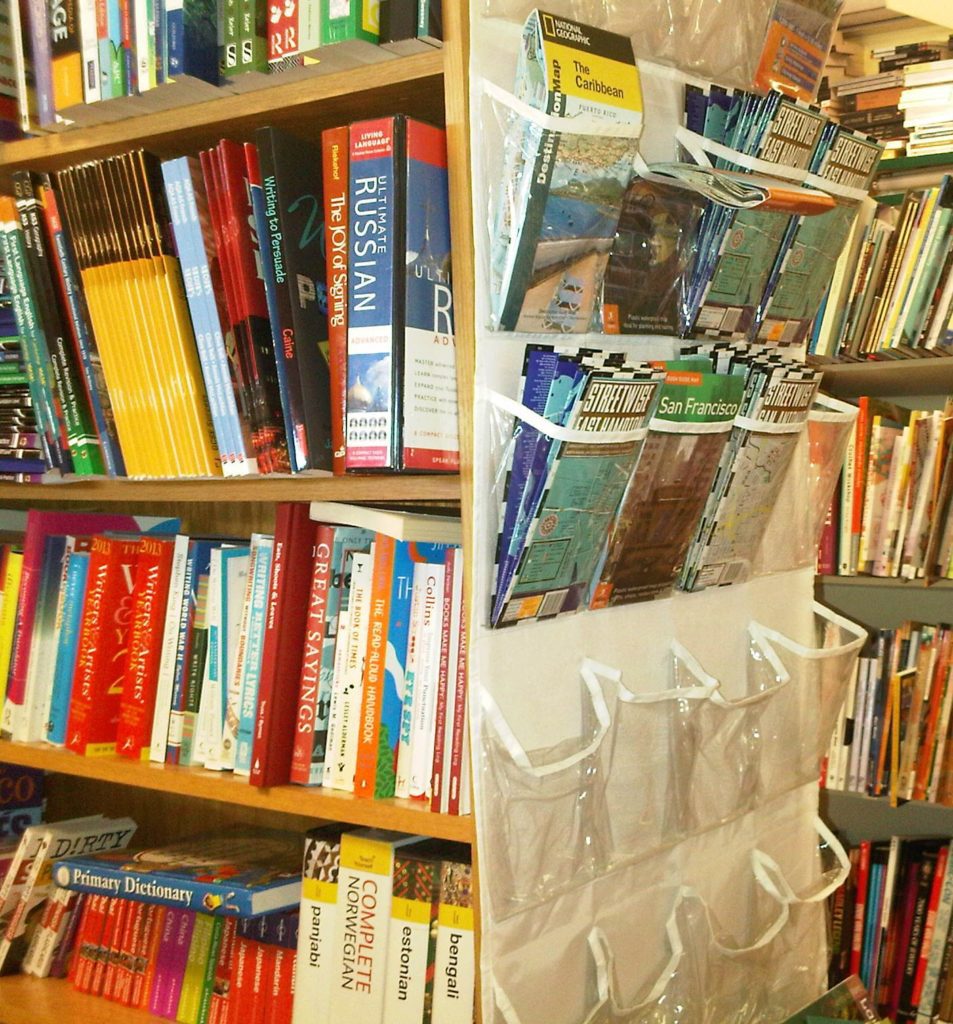

One of my hotel rooms had this garbage can. It is divided into 4 sections for recycling – plastic, paper, glass, cans and waste. I thought this was a fantastic way to get travellers to recycle. Everything was disposed of in one place.
Fun inventions
The first time I saw this I was a little confused. It is a tap and hand dryer all in one. No dripping across the floor to get a paper towel or use a hand dryer mounted on the wall. It also is a no-touch device that makes it easy to have clean hands when you’re done washing. How does it work? You wash your hands under the tap, the water is turned on by a sensor. Then you move your hands to the right and left ( I like to call them the airplane wings) and the air turns on to dry your hand.
I enjoy seeing furniture that has more than one purpose. These tables can be used as seating, they store nicely under each other and they are eye catching home decor.
Thought Provoking Artwork
Sometimes my organizational find is artwork. This piece is called Organization. It is oil on canvas, 1933-1936, painted by Armenia born, American artist Arshile Gorky. I wonder why he called it that. Any thoughts?
This metal sculpture is by Ruth Ewan, 2019. It is called the Silent Agitator. Ewan’s clock is based on an illustration by Ralph Chaplin. It is a nod to the Industrial Workers of the World labour party. (IWW). It is also a new timepiece adding to the historical collection of ones that helped sailors know what time it was.
Donation
I saw this very creative way to share donations. Items are bagged and tied onto a fence. Anyone can take an item they can use.
Competition
I have not traveled to Nepal, a friend has. She sent me this picture with the caption, competition? It was fun to see a very similar logo in another country.
Here a just a few fun organizing finds from some of my travels. Which one do you like best? Let me know in the comments.






Contact her at julie@mindoverclutter.ca
Click here to learn more about her online course Create an Organized Home.
Twitter – Facebook – Facebook group Organizing Mind and Space
Reading time – 10 minutes
If you want to try and get your wardrobe organized once and for all, then you have come to the right place. Here you can find out the mistakes you could be making with your wardrobe, while also finding ways to actively try and fix the issue. If you want to find out more, then simply take a look below.
Start with a Big Clear-out
It is suggested that you have a big clear-out as this is the best way for you to try and get things nice and organized. You need to decide what you want to sell, what you want to keep, what you want to donate and what you need to throw away. Try things on as you go. If you leave a big pile of clothes to try on until the end, the task may seem overwhelming. Some clothes may have fit once upon a time and may not fit anymore, an item may need to be repaired, your tastes may have changed, or you never know, there could be a gem that was lost at the back of the closet that does fit you. If you can be mindful of how your body and style change with time, it will help you to keep only the clothing that suits you and prevent you from having a lot of items that do not fit anymore or items that are dated.
Adopt a System for your Wardrobe
Try to adopt the policy of one item in, and one item out. For every new item you buy, you need to make sure that you give one away. If you want to test yourself, then make it two items that you give away. If you have a good clear-out, when you bring something new home, it will fit nicely in your closet, match other clothing, be the correct size and make it easier for you to get dressed in the morning.
Make Some Money
You might not like something anymore, that doesn’t mean that someone else will feel the same way. To reduce your shopping buy something new only when you have made money from selling something old. Make sure that you use sites such as eBay when you’re researching what your items might sell for. There are also consignment shops that focus on high-end pieces as well. If you are trying to sell clothes to a store, they should be no older than 6 months. Stores, like Plato’s Closet, want to have current fashions and items that will sell quickly. You may find that you are able to make more than you think, and it is a fantastic way to remove frustrating clutter.
Organize Everything
If you can take the time to organize everything then your wardrobe will look neater and you will save a lot of time choosing your outfit. When you need to get changed in a hurry, having your clothes organized can work wonders. There are many systems for organizing a closet.
You can group clothing by type, pants, shorts, shirts, ties, sweaters, blouses, dresses, suits etc. Next, you can group each category by colour. This is a great way to see how many you have of each colour. In my closet, I have enough black items (pants, tops, dresses). So when I go shopping I don’t even look at anything black.
You might prefer to put your clothes into outfits. Placing a top, bottom and third piece together makes it easy to pick your outfit for the day. This system allows you to see how many single piece items you own. Those items are the ones that don’t get worn often because they don’t go with anything. That is a good category of items to donate.
Thirdly, you might organize by purpose. Group together all your work clothes, workout clothes, party/fancy clothes, casual clothes and lounging clothes. This system lets you see how much you have in each category compared to how much time you spend doing these activities. For example, if you work 40 hours/week, workout 5 hours/week, spend 15 hours/week doing things and 1 evening/week getting dressed up you can see that your wardrobe needs mostly work clothes, a few casual clothes, less fancy clothes and some workout clothes. Check and see if you have a balanced wardrobe for your lifestyle.
If you find it hard to stay then organize your wardrobe 3 or 4 times a year to see if it is balanced by lifestyle and colour as well as how many unused single items are hiding.
Don’t Forget about Shoes
As you get older your feet change. You lose the strength in your arch and your foot flattens making your foot wider. Try on every pair of shoes to see if they fit, if they are in good repair and a style you like. Group your shoes to make it easier to find what you need. They might be grouped by season, colour or style. If you have a lot of shoes in boxes then tape a picture to the outside of the box. It will make it easier for you to find what you need without having to go through endless boxes. You might want to purchase clear shoe boxes for storage. There are many shoe organizing systems, over the door, under the bed, wall units, cupboards, racks etc. Look for an option that suits your needs and space. If you purchase expensive shoes get them repaired. Zippers can be replaced, heels can be reheeled, soles can be replaced and once they are polished professionally they will look like new. Shoes can be donated too.
Invest in the Right Equipment
Many people like matching hangers, purely because it means that you do not end up getting distracted by a messy looking wardrobe. There are many styles of hangers and sometimes you need specialized hangers for certain garments, pants, skirts, ties, belts, scarves etc. If you have a small closet you will need to use less bulky hangers. Wooden hangers take up a lot of space. Felt covered hangers prevent items from slipping off but it takes patience to get a garment hanging smoothly. If you’re not a patient person only purchase a few felt covered hangers. Whatever style of hanger you like (plastic, metal, wooden, felt), purchase a good quality one so they don’t break, crack or bend. Try using boxes in the drawers or on the shelves to keep clothing organized. They prevent items from “moving” all over and making it difficult to find what you need. They work well for belts, bags, scarves, socks, smaller items etc. If you invest in the right systems, that match your closet and personality, you will find it is easier for you to stick to your system.
Separate Clothing by Seasons
You may find it helpful to divide your clothes into summer and winter options if you have a smaller closet. Having only half your clothing displayed at one time makes it easier to find what you need. When you change the clothing displayed for the next season, it is a good time for you to go through everything, donating items you didn’t wear, don’t like or don’t fit. In some places, people have more items they wear year round and with climate change, there is becoming less of a need for 2 seasons of clothing. This means you will need fewer clothes and it will be easier to keep everything organized.
When you are deciding what clothes to keep and what to donate ask yourself:
- Do I get compliments when I wear it?
- Does it fit and do I feel good when I wear it?
- Does it send the right message about the type of person I am? (confident, fun, honest, knowledgeable, healthy, etc)
- How much is enough?
Reducing the amount of clothing you own, having a great closet space, and using good organizing devices will help you to have an organized wardrobe. I think I have addressed many concerns about organizing your wardrobe. Have I left anything out? Let me know in the comments.


Contact her at julie@mindoverclutter.ca
Twitter – Facebook – Facebook group Organizing Mind and Space
Click here to learn more about working with a Professional Organizer?
Putting some planning into the time when your children are out of school will make life at home easier. Don’t over plan activities for the children. Give them time to appreciate being at home and then going back to school. Share the planning and the fun. Make it a special time together full of joy, learning and excitement not stress, tension and arguments.
10. Make a list of things that need to be done around the house. For example, sweep out the garage/shed, break down boxes and put them in recycling, etc. When the children start fighting or complain about being bored, tell them to pick a task from the list. You get small jobs done and they are separated and not fighting. I used this one summer. It worked so well that they only fought once. They found things to do so they were not bored. Three things got completed from the list.
9. Pack the backpack with the necessary items for the next day the night before and place it near the door. Make your morning going off to day camps, activities or childcare easy to get out the door quickly.
8. Have a routine for wet swimming towels and bathing suits. They might hang them up, give them to you or place them in a specific spot. It is an easy way to help them learn about responsibility. No one wants to get into a wet bathing suit or reuse a damp towel.
7. Have an agreement about snacks and dirty dishes. May a list and post it with snack choices. Set a timer for snack time if you have young children. Are dirty dishes put in a dishwasher, placed in the sink, washed or left on a table? If the agreement is not kept then have them decide on a consequence. Children are very good at deciding on consequences you might never have considered.
6. Determine a schedule for their activities, whether they are in programs or at home. Include screen time, outdoor time, reading time, and creative time. Also included in that schedule, is a time when you will be “unavailable to them” when you are all at home. Use this “unavailable time” to get necessary tasks done around the house so things don’t get disorganized. It is easy to always put off household tasks and to help, to play, or be constantly interrupted by your children so that things don’t get completed.
5. Have a routine for getting meals on the table and food and dishes put away. There are a number of tasks involved at mealtime: setting the table, food preparation, cleaning up leftovers, clearing dishes from the table and washing dishes. Give everyone a task to do. Record the tasks on a calendar and assign a person to each task. The task assigned each day will depend on who is home before supper and who may have an activity after supper and they have to quickly get ready to leave.
4. Have a morning routine. Getting things done in the morning before the day gets busy is the best way to keep things organized. Set a time for the latest children can sleep in. Waiting for people to get up can be very frustrating if people are on very different schedules. This agreed upon time may be different for each day of the week. Tasks may include making their beds, making, eating and cleaning up their breakfast, tidying up things that were left out from the previous day, and completing a household chore. Pick tasks that will help to make the day easier and keep the living space neat and tidy.
3. Declutter as you go. If children aren’t interested in some toys (inside or outdoor) collected them and donate them. If their clothing is too small or they won’t wear it, start a bag or box so they know where to put things they no longer need. They may have books or craft supplies that they have outgrown, collect them too. You may decide to give them a challenge, find 5 things each day that you no longer need, use or love.
2. Try new ways of getting things done at home that is fun, simple and easy. Summer is the perfect time to change the way things are done. There is a little more time to teach children new skills and routines because there isn’t the pressure of getting homework done and getting to bed.
1. Sit down and have a family conversation about the expectations for the summer. Include when bedtime will be, responsibilities, consequences, special trips, activities and events that everyone would like to do. Let the children help with the summer plan and take ownership in developing it. When everyone is happy, things go a lot smoother. Enjoy the time together.
Add tip number 11 in the comments. What do you do to help stay organized with the kids around the home?


Contact her at julie@mindoverclutter.ca
Twitter – Facebook – Facebook group Organizing Mind and Space
Click here to learn more about working with a Professional Organizer?
Reading time – 5 minutes
When I am working with clients one of the first things they tell me is how many junk drawers they have. I can tell they usually think they should have none. Depending on how you define junk drawers they may be right. Why are they keeping junk? Most likely they are referring to the drawers that contain many items, from a number of categories, that they don’t know where to store so they put them all in one drawer. Does that sound familiar? Let me relieve your discomfort and say a junk drawer is ok.
What is a junk drawer?
When I am working with clients I know that they need a drawer to place things that they need to access quickly. It may be a screwdriver, takeout menus, a lighter for candles, string, tape for labelling leftovers or light timers etc. What is in your junk drawer? The problems arise when the junk drawer has junk in it. Spilled expired pills, pieces of ribbon, miscellaneous hardware, unwrapped candy, unneeded receipts etc. These items need to go to the garbage or appropriate recycling. Clean out your junk drawer and make it a quick access drawer. Rename your junk drawer so it is easier to determine what should be stored in it to make your life easier. What is the new name for your junk drawer?
How many junk drawers may I have?
Now that we have established you don’t keep junk. You want things accessible. With my clients, I think that junk drawers in the kitchen and home office are common. It is easy to have a drawer on the main floor, usually the kitchen, for items that you commonly use and don’t want to go to other areas of the house to get. In the office, there is a drawer that holds things that are used frequently and you don’t want to go searching for them, tape, glue, paper, envelopes, and electronics. Make sure that your office doesn’t become a junk room, storing everything that has not been assigned a storage space somewhere else in the home. I would suggest one junk drawer per floor in your home. How many junk drawers do you have?
Are junk drawers a bad thing? Only if they contain junk. Click To TweetHow to organize a junk drawer
A junk drawer should not be disorganized. You won’t be able to find what you need in the drawer. I have seen junk drawers so stuffed full that they can’t be opened. Use containers to organize items so that when you open the drawer you can access what you are looking for. There are lots of products available to keep the drawer organized:
- containers
- expansion drawer dividers
- expandable trays
- jars
- ziplock bags
Whatever your preference is, sort, remove unneeded items and then purchase your organizing product or repurpose items you already own.
I have containers for:
- pens, paper, pencils and makers,
- twist ties, elastics and bread tags,
- light timer and electrical outlet power bar
- string and tape
- first aid items.
That is what I need in my junk drawer. What do you need in your easy access drawer?
Why are junk drawers bad?
Junk drawers are not bad. Everyone needs a place to put items they don’t know where to store. Junk drawers are only bad when they store items you don’t need and are afraid to let go of. Look through your junk drawer on a regular schedule and clean it out. Remove items you don’t need, take items to their proper storage place and put the real junk in the garbage. Junk drawers are bad when they give you an excuse to procrastinate and not take the time to put things away properly or make decisions about what to keep and what to let go. Does your junk drawer let you procrastinate?
Let me help you with your junk drawers. Book a complimentary virtual organizing chat with me.






Contact her at julie@mindoverclutter.ca
Click here to learn more about her online course Create an Organized Home.
Twitter – Facebook – Facebook group Organizing Mind and Space
Perhaps you are familiar with the Professional Organizer industry. It is an unregulated industry. Anyone can call themselves a Professional Organizer. Professional Organizers in Canada (POC) was established about 23 years ago and the National Association of Productivity and Organizing Professionals (NAPO) the American organization is about 40 years old. Look for organizers listed on these directories. Most Professional Organizers have their own businesses and specialize in areas of organizing. As you read their websites you will be able to see their years of experience, type of training and continuing education.
What happens when I call an organizer?
Usually, there is some type of conversation over the phone, Zoom or email to discover what type of organizing dilemma you want solved. It might be to have a space organized, help with moving, develop systems to make things function more smoothly, downsizing, coaching or virtual organizing etc. Then there is a description of how the job will be completed. This is about the only common business practice. Since we all own our own businesses we have varying ways of continuing.
When you contact Mind over Clutter:
Can I get an estimate of the cost for the work to be completed?
Most times it is hard to estimate how long a job will take during the conversation. I offer a free one-hour assessment to my in-person clients to see what the job entails and give you an idea of how long I think it might take and what we will do. I also offer a 30-minute assessment to my virtual clients. One of the biggest factors on how long a job will take is how easily and quickly you can make decisions if items stay or go. The second factor is, sometimes the job expands to include unforeseen work: filing papers, assembling shelving or bookcases, corners and areas not discussed during the assessment. I work at an hourly rate and offer a package of 10 hours at a reduced rate.
How does it work?
My virtual clients have 4 ways of working with me.
- A series of mini sessions
- Be there with you online as you work on your project to support, coach and mentor you
- Complete plan is developed for you to do on your own timeframe
- Develop routines and systems to help manage your time
80% of my in-person clients work with me to go through items and decide what will stay and what will be donated or recycled. Then we discuss the best place and way to store the items so they can be easily found and used. Most clients like to learn the skill of organizing and so working together helps them to learn where start, how to sort, how to decide what stays and what goes, how to store things in containers and where is the best location to store different types of items.
What if I don’t want to help or can’t help?
If you don’t want to help, I can work alone sorting items based on our conversation on what you want to keep and what you want to donate. Then I create a donate pile and a garbage pile and a recycle pile. Nothing leaves the house until you have looked through each pile. If you can’t help, you can sit with me and I can bring you things to do and you can answer my questions.
What if I need some guidance but can do all the work myself?
We can work together virtually. You show me the space to organize over Zoom and I send you a plan and you complete the work. Here is more information about virtual organizing. Or I can coach you through the process in a conversation in-person or virtually by discussing what you want to accomplish and how you can accomplish it.
Maybe you don’t want me to see your home. You can purchase my online course, Create an Organized Home and use the step-by-step videos, worksheets and checklists to complete your project. You will have access to me through a Facebook group.
What happens with donations and recycling?
At the end of each work session, I take the donations. I will drop them at centers that will take your things. I can take them to the donation center of your choice too. I take non-curbside recycling at the end of each session. Usually, that includes batteries, paint cans, small electronics, small appliances, textile recycling, medications, and plastic bags.
Why wouldn’t I just do it myself after the one hour free assessment?
Some people do. They have enough information and can continue with the job. Most people feel overwhelmed and stressed by doing it on their own. They find it easier to work with a professional who can guide them through the problem, help solve it and reduce the stress they feel about the situation. Working with someone makes you block time out for the appointment and helps you to stop putting it off. It is always more fun working with someone than working alone.
My virtual clients find that working with me makes them accountable to themselves and to me, especially in the mini-session program. We work together weekly, biweekly or monthly.
Will you give me homework to do?
Only if you want it. Some people like to keep going with the work and get it done quickly. Some people don’t want to work alone or would feel bad if they didn’t get the homework done so I don’t that person anything to do. There are some tasks that are very time consuming and if you can do it on your own it makes it more cost effective for you, sorting paper, going through books, CDs, VHS tapes, and clothing. However, those tasks can be difficult to figure out what to keep and what to donate, so it might be easier for you to do it with me present.
Let’s chat
If you need more information book a complimentary 30-minute virtual chat with me, whether you want to work in person or online. I hope to hear from you soon.
Please post your questions in the comments.


Contact her at julie@mindoverclutter.ca
Click here to learn more about her online course, Create an Organized Home.
Twitter – Facebook – Facebook group Organizing Mind and Space
